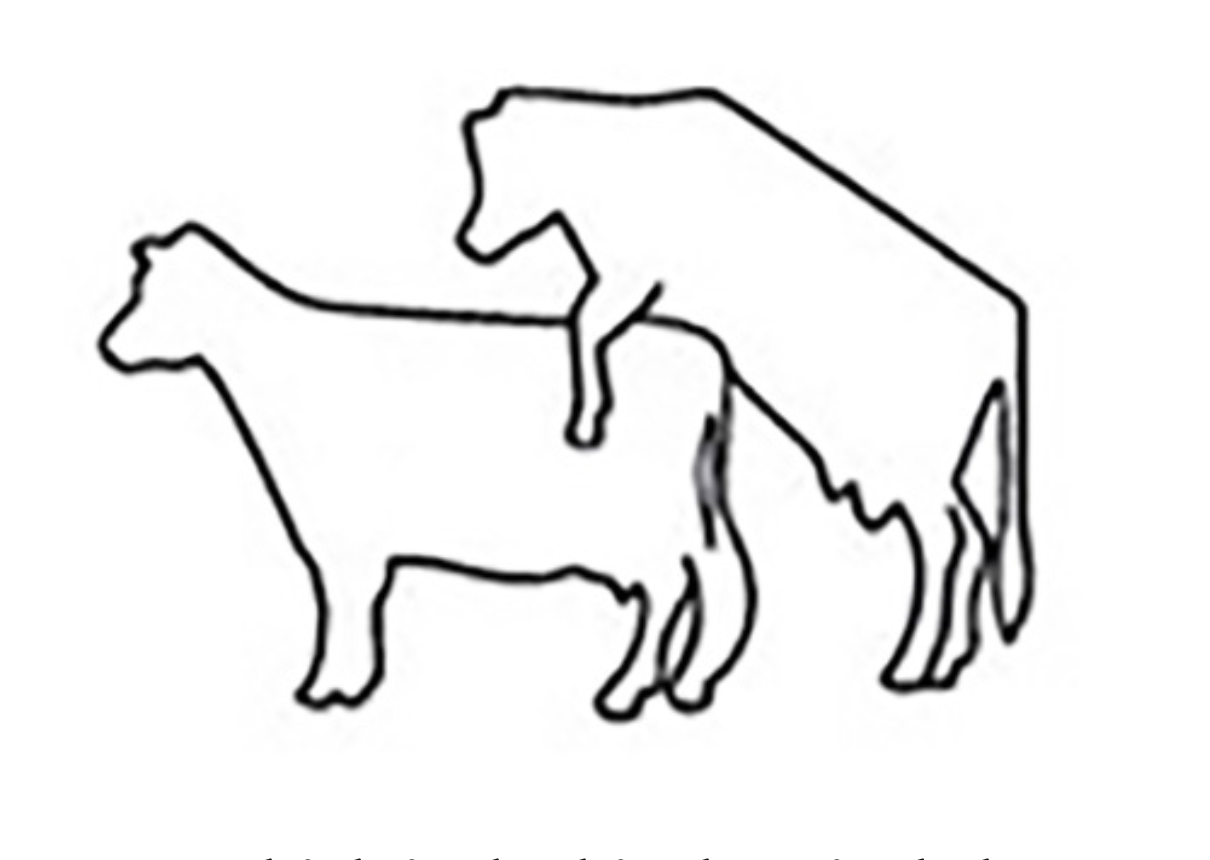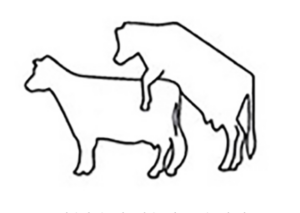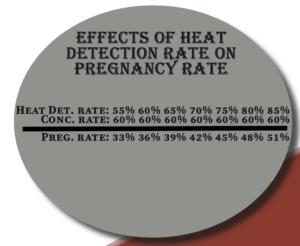
Heat Detection
Detecting estrus is an important part of the breeding process. It is the catalyst for determining when insemination takes place. The length of standing heat varies, but on average occurs for 8-12 hours. Ovulation usually occurs 12-24 hours after the first signs of standing heat are detected. When the egg is released from the ovary, it has a fertile life of less than 12 hours and
when the sperm is deposited into the female’s reproductive tract, it lives for an average of 24
hours. Sperm undergo capacitation within the first six hours of entering a female’s reproductive tract, which is the biochemical change necessary for them to penetrate and fertilize the egg. The goal is to time insemination so there are many live capacitated sperm cells in the oviducts at the time of ovulation. It is preferred to have the sperm waiting for ovulation.
The industry standard for timing of insemination is the a.m-p.m/p.m.-a.m. rule. When estrus of a female is observed in the morning, she should be bred that afternoon. When estrus of a female is observed in the afternoon or evening, she should be bred the following morning. Not all females are created equal and heat cycles will differ from one to the next. This rule acts as a general guide in determining the best time to breed. There are herds that schedule insemination to occur once per day and achieve acceptable fertility results. It has been reported that herds following this protocol may sacrifice up to 5% of conception rate.
Beyond normal variation in estrus, other factors exist that influence the effectiveness in monitoring and watching for estrus. For three years, researchers at the University of Kentucky watched a dairy herd under 24-hour surveillance from the time they calved until they were pregnant again. The purpose of this study was to observe the influence of a cow’s reproductive status on how she will interact with a cow in heat. What the research study found was that the herdmate’s reproductive status does influence the chance she will interact with cow in heat. In his article titled, Heat Detection – Influence of Herdmates, Heersche (n.d.) reports the results of the University of Kentucky research study. If a cow was in standing heat yesterday, is currently in standing heat, or will be tomorrow, there is a 62% chance that she will mount a cow that is in standing heat. If a cow is cycling, but has not had a standing heat since calving and her ovarian cycle is in the same stage as a cow in heat (+/- one day), there is a 32% chance she will mount a cow in standing heat. A cow who is in the first half of her estrous cycle (days 2-10) has a 25% chance that she will mount a cow in heat and a cow who is in the second half of her cycle (days 11-19) has a 5% chance. Finally, results of the study show that pregnant cows and cows that have not been observed in heat since calving and are on ovarian cycle days 2-19 show very little interest in mounting a herdmate that is in heat. Estrous detection is greatly affected by the footing surface where cows interact. Cows interacting on dirt surfaces show standing heat longer than cows interacting on grooved concrete surfaces, 13.8 hours versus 9.4 hours. It is not surprising then that, cows on dirt surfaces display twice the number of stands (6.3 versus 2.9) and mounts (7.0 versus 3.2) than cows on concrete.
Heat detection should always receive high priority, especially in operations that implement planned artificial insemination programs. Failure to detect heat and errors in heat detection can lead to a number of issues, beyond a decrease in pregnancy rates. Undetected heats can result in
longer calving intervals and fewer claves. A combination of unrecognized estrus and low conception rates may lead to culling cows that are perfectly fine. So, what can you do to help improve heat detection and accurately inseminate cows?
Here are three practical applications for making heat detection more calculated. When a large group of cows or heifers are being bred, it is inevitable to have two or three that do not take. With a majority of the group pregnant, the chances of observing the open females in heat decreases. A helpful practice to make identifying estrus a bit easier is to move the two or three open heifers to a group of younger, non-pregnant cycling heifers. Synchronizing estrus is another helpful way to get heifers and cows to come into heat at about the same time. Lastly, there are other heat detection aids that can be used and implement from tail chalk, heat detection strips, kamars, and electronic heat detection systems.
To summarize, heat detection is an integral part of any breeding program. It is important to understand the science behind the practices we implement for getting cows pregnant. As previously mentioned, there are numerous ways to achieve higher heat detection rates. These practices should be seriously considered due to the potential economic impact of a low heat detection rate. A low heat detection rate can cause increased calving interval, fewer calves per year, culling cows, and a lower pregnancy rate.




